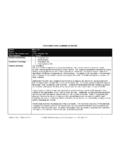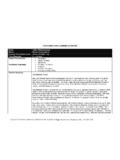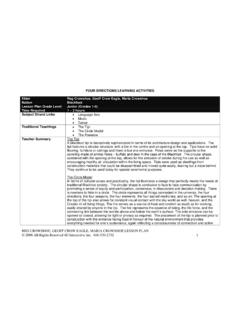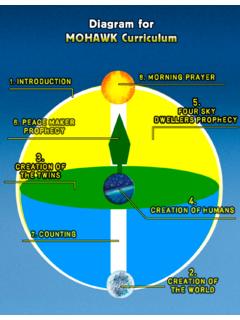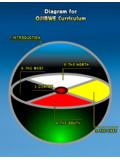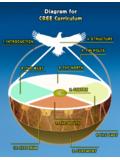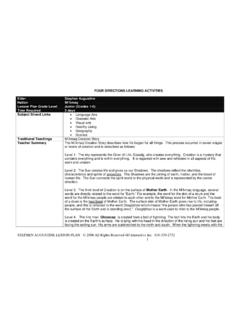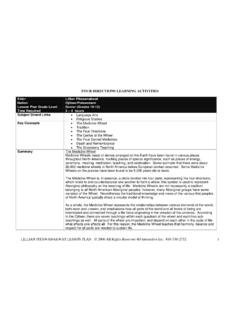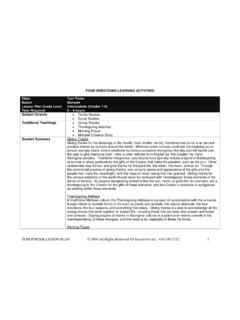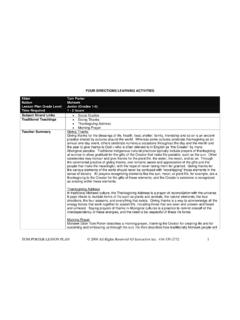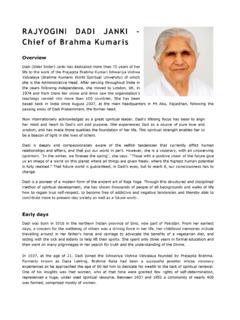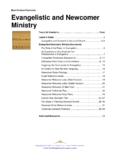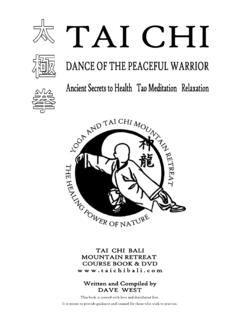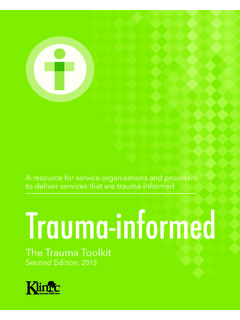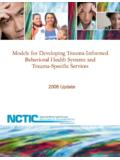Transcription of Teacher Resource Kit - Four Directions Teachings.com
1 Four Directions Teacher Resource Kit Invert Media Inc. 1 FOUR Directions Teacher Resource KIT INTRODUCTION AND OVERVIEW This Teacher Resource Kit is an educator s guide to optimizing learning applications based on the Four Directions website. The curricula attached to the website include lesson plans designed to maximize opportunities for classroom activities that are immediately connected to the teachings found on the site. These lesson plans have been developed for junior grades (1-6), intermediate grades (7-9), and senior grades (10-12).
2 Educators of kindergarten children and adults will also find suitable exercises that can be used with relatively minimal modification. The kit was developed with the classroom Teacher in mind, and without assuming any prior knowledge of Aboriginal cultures or traditions on their part. It is assumed that the Teacher will be resourceful and flexible in coordinating learning activities. GOALS The primary goals of the Four Directions web site and supporting curricula are: To raise awareness and acknowledge the value of Aboriginal nations and their rich cultural traditions, and thus contribute to the broader retention of these cultural ways; To instill cultural pride in Aboriginal communities, especially among Aboriginal youth; To promote academic excellence, first in Aboriginal communities, and then in the broader national and international communities, through learning that relates to Indigenous content and methodologies.
3 And, To further the development of a global multimedia education network, and of Indigenous capacity for contributing to this network. The curriculum goals break down further as follows: To provide quality educational content The Four Directions website and curricula teach about Aboriginal knowledge and its place in the world. The lesson plans are designed to support the implementation of learning activities that initiate thought, discussion and learning processes based on well developed and well sourced curriculum content. Furthermore, this content brings living traditional Aboriginal Four Directions Teacher Resource Kit Invert Media Inc.
4 2 perspectives, knowledge and wisdom of the world to the forefront of the educational experience - rather than merely providing content that regards Indians as topics. Finally, the curricula provide opportunities to link and contrast these indigenous forms of knowledge with contemporary, scientific, and widely prevalent views of the world. All of these aims can be explored fruitfully in a variety of learning environments, regardless of the cultural background of the teachers and students. To support indigenous educational practices The lesson plans also aim to support the incorporation of indigenous education principles in the teaching and evaluation process as much as possible.
5 Of course, education principles that might broadly be called indigenous cannot be easily imparted and practiced simply through exposure to this Teacher s Resource kit and the accompanying curriculum. The practical application of such principles will depend on the cultural worldview and background of individual teachers and students. In other words, depending on a range of factors related to indigenous experience - and on where the experience of classroom participants lies in relation to these indigenous cultural factors - this curriculum aims to support the implementation of teaching methodologies that are distinctly indigenous. Ultimately, we hope the Four Directions curricula will contribute to the fostering of quality cross-cultural discussion on educational practice.
6 To support holistic education The Four Directions education curriculum was designed to nurture the self-actualization of the whole person through the sacred circle concept. For both individual and group visitors to the website, there is ample opportunity for multidisciplinary learning. The Four Directions education curriculum is unique in that it weaves the study of the arts with the sciences and humanities, from a platform based in technology, using a culturally relevant framework. For each lesson plan, learner objectives are identified in terms of knowledge and understanding; inquiry and values; and skills and applications.
7 Knowledge and understanding pertains to theoretical concepts presented through investigation and exploration exercises, as opposed to the innate personal objectives achieved through reflective exercises. The skills and applications refer to the development of skills in the areas of literacy, presentation, research, technology, communication, and so on. To support Aboriginal literacy 50% of Native Learners (particularly those in the far north) meet the criteria for learners of English as a Second Language (ESL), even though they are Canadian citizens (ONLC, 2001). With this reality in mind, the Four Directions education curriculum seeks to improve English literacy achievement among Aboriginal students.
8 Although traditional language is widely recognized Four Directions Teacher Resource Kit Invert Media Inc. 3 as a fundamental link to cultural preservation, it is simply beyond the scope of this project to record the teachings in Aboriginal languages at this time although over the longer term, we hope to address this area as well. Each teaching offers a reading in print form (PDF) in English and as well as an audio segment. French translations are included. The curriculum is written at an intermediate reading level (Grade 7); however, educators can make modifications to suit a variety of age and literacy levels.
9 As well, each lesson plan offers vocabulary terms suitable for spelling and comprehension exercises. ABOUT THE WEBSITE Indigenous Worldviews The Four Directions Website reflects indigenous worldviews, which are based on principles of harmony and balance, as traditional ways of knowing originate from close observations and experience of the cyclical nature of the universe. Consequently, though Aboriginal nations differ significantly in terms of language and cultural practices, the commonality is an overall worldview that embraces concepts of cyclical interdependency and equilibrium, demonstrated through natural patterns of repetition. These concepts are reflected in the interactive Four Directions website design model (based on the concept of the Medicine Wheel, defined below).
10 Who is the site audience? Website visitors may include a variety of Aboriginal community members, including classroom students and teachers, parents, elders and others, as well as non-Aboriginal people interested in learning more about Aboriginal culture. However, despite the variety of potential website visitors, the overall learning objectives of the Four Directions education curriculum remain essentially the same: to provide an opportunity for interactive learning about Aboriginal knowledge and perspectives on the world. KEY TERMS AND CONCEPTS Various words and phrases on the Four Directions website require definition for reader clarity.
